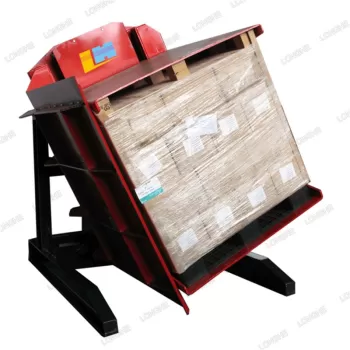How does a Pallet Inverter work?
When it comes to the logistics and warehouse industry, pallet inverters are an indispensable tool that ensures the efficient handling of goods and materials. These machines play a vital role in streamlining operations, reducing labor costs, and preventing product damage.
Understanding the Pallet Inverter
A pallet inverter, also known as a pallet flipper or pallet rotator, is a specialized piece of equipment designed to rotate pallets and their loads. Its primary purpose is to reorient the contents of a pallet without the need to manually handle the products. This innovative machine is particularly helpful in situations where goods need to be transferred from one type of pallet to another, goods need to be examined or repackaged, or when damaged items need to be sorted out.
How Does It Work?
The operation of a pallet inverter is both straightforward and ingenious. It typically consists of the following components:
Loading Station: At the loading station, the forklift or other material handling equipment places the pallet with its load onto the inverter.
Clamping Mechanism: The pallet is securely clamped by the inverter's arms or clamps, ensuring that the load remains stable during rotation.
Rotation: The inverter then rotates the entire pallet and its contents 180 degrees or more, depending on the specific requirements.
Unloading Station: After the rotation is complete, the inverted pallet is released at the unloading station.
Release and Removal: The clamps open, allowing the now-inverted pallet to be easily removed by the forklift or other equipment.
This simple yet efficient process ensures that the load is smoothly transferred to the new pallet or simply reoriented for inspection or repackaging.
Applications of Pallet Inverters
Pallet inverters are versatile tools that find applications in various industries. Here are some of the common use cases:
Food and Beverage: In the food industry, pallet inverters are used to inspect products for quality control, repackage goods, and transfer goods from wooden pallets to hygienic plastic pallets.
Pharmaceuticals: Pharmaceutical companies utilize pallet inverters to safely and efficiently handle delicate products while ensuring compliance with strict regulations.
Retail and Distribution: In the retail sector, pallet inverters streamline the transfer of products from suppliers to distribution centers, reducing handling costs and minimizing product damage.
Manufacturing: Manufacturers often use pallet inverters to reorient raw materials or finished products for various production processes.
Recycling: Pallet inverters play a crucial role in recycling facilities by facilitating the transfer of recyclable materials and reducing manual labor.
Conclusion
In conclusion, a pallet inverter is a highly valuable tool in various industries, offering efficient and cost-effective solutions for load handling, repackaging, and product inspection. Its simple yet effective operation, coupled with the wide range of applications, makes it an essential addition to any logistics and warehousing operation. By understanding how a pallet inverter works and the benefits it brings, businesses can make informed decisions to enhance their efficiency and productivity.




